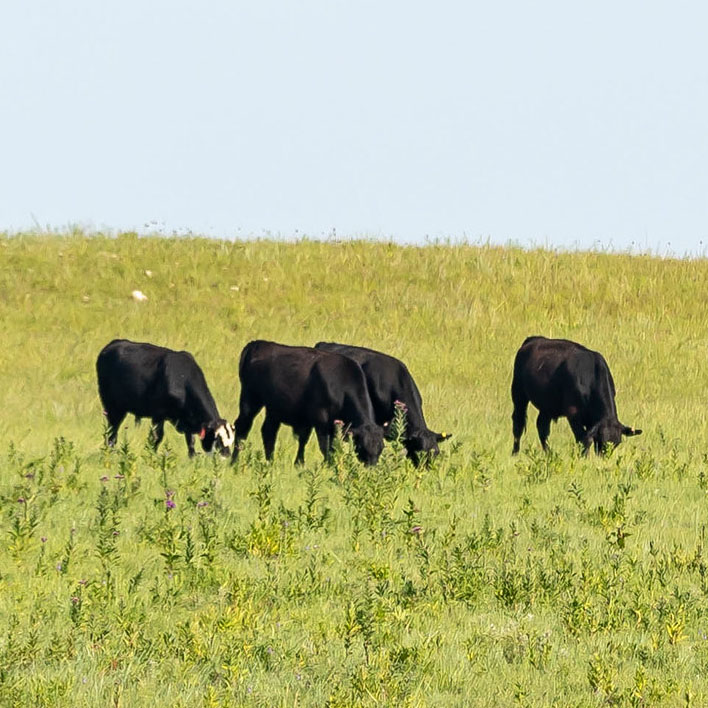K-State vets caution producers about stressed plants, pasture toxins
Prussic acid, nitrate poisioning can be caused by weather or environment.
August 9, 2022

Beef cattle can experience sickness and even death when grazing pastures that have plants undergoing stress and releasing toxins such as cyanide and nitrates, said Kansas State University clinical veterinary toxicologist Steve Ensley on a recent Cattle Chat podcast.
"There are two plant-related issues we see depending on the weather and the environment — cyanide toxicosis from prussic acid and nitrate poisoning," Ensley said.
With cyanide, the cattle will show acute clinical signs as soon as 30 minutes after consuming toxic plants, according to Ensley. Those signs include trouble breathing and a change in their movement; in some cases, the first visible sign is death.
If producers observe these symptoms, Ensley said cattle need to be pulled from the feed source immediately to keep the poisoning from impacting other cattle in the herd. He also said a blood sample from the vein of the animal can show what type of toxin the cattle have consumed.
"If the blood is chocolate brown, that indicates a nitrate poisoning, while blood that is cherry red points to cyanide. In some cases both toxins are at work at the same time," Ensley said.
Aside from removing cattle from the grazing source there is little that veterinarians can do to reduce the risk of death once the cattle have consumed the toxins, said Ensley.
However, being aware of the risk can be helpful, said Brad White, a veterinarian with the Beef Cattle Institute.
"A plant that is stressed can release these toxins, so it is important to monitor the field conditions and if the plants are turning yellow on the leaves that can be a sign of stress," White said. "Another time the plant experiences stress is after the first frost."
Ensley added that sorghum-sudan grass and Johnsongrass are two examples of plants that are more prone to making cattle sick.
There are some management strategies that can be helpful, said the experts.
"If you green chop it and feed it immediately the cattle should be able to consume it fine; however, if you put it in the wagon and feed it the next day, the level of cyanide in the plant will be at its peak and could kill them if they ate it," Ensley said.
He also said the regrowth in pastures often carries more concentrated levels of cyanide and so after a rain the cattle will want to eat the new growth. That can lead to trouble.
Fields that have been treated with nitrogen fertilizer and then cut for hay can be troublesome to cattle if the nitrogen concentration is too high.
"If you bale the hay and mechanically crimp it, some of the toxins like cyanide will be released in that process," Ensley said. He also recommended ensiling the feed source as it will typically decrease the nitrates by one-third.
When in doubt, Ensley and White recommend testing the feed sources to get the nutrient profile before feeding.
"I don't recommend just putting the cattle out there to see what happens without knowing what they are consuming as it could have a bad outcome," Ensley said.
Source: Kansas State University Research and Extension, which is solely responsible for the information provided, and wholly owns the information. Informa Business Media and all its subsidiaries are not responsible for any of the content contained in this information asset.
You May Also Like


.png?width=300&auto=webp&quality=80&disable=upscale)
